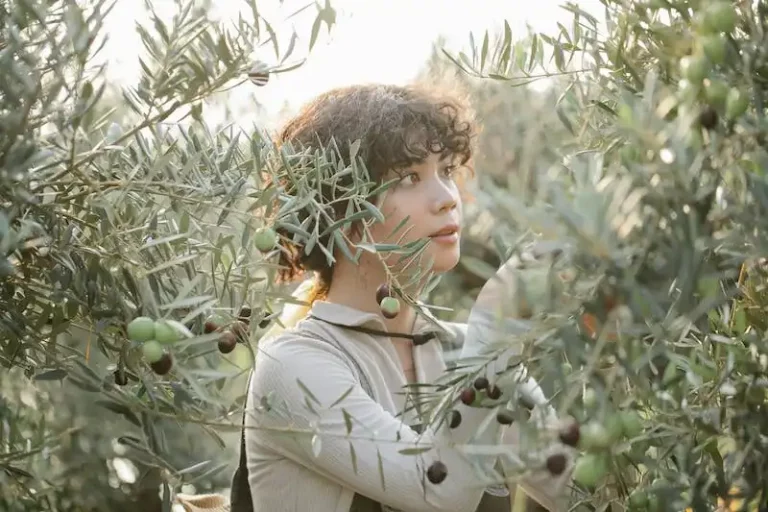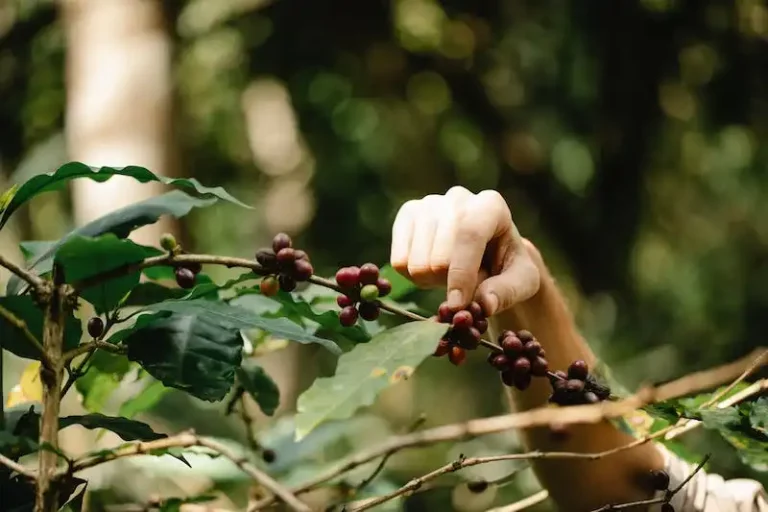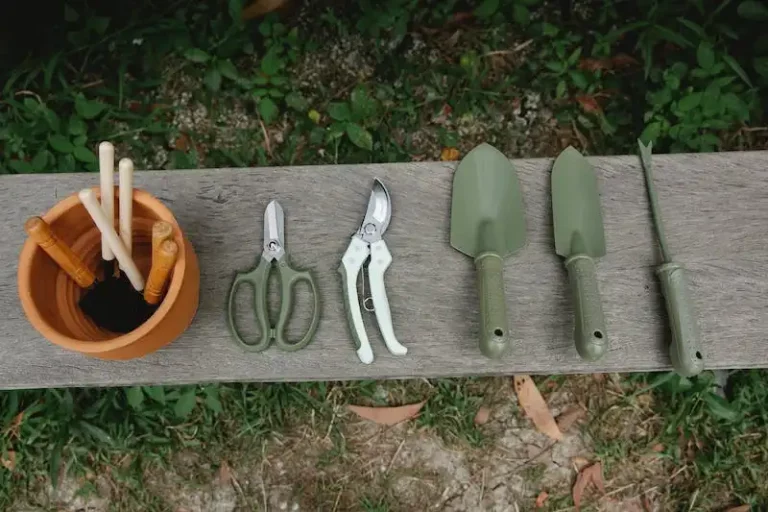When it comes to the quick and delicious fruits that can be stored and enjoyed all year long, apples and pears are at the top of the list. With their variety of colors and flavors, they are a favorite for both snacking and using in recipes. Whether you are picking them fresh from the tree or buying them at the store, there are a few things to keep in mind to ensure that you get the tastiest and ripest fruit.
When picking apples and pears, it is important to choose ones that are ripe—and this can be a little tricky. While the color can be a good indicator of ripeness, it is not always foolproof. To tell if an apple or pear is ripe, give it a gentle squeeze with your thumb. If it feels firm but gives slightly, it is ready to be eaten. If it is hard or mushy, it is not yet ripe or may be overripe.
After you have picked your apples and pears, it is important to store them in the right conditions to keep them fresh for as long as possible. Apples can be stored in a cool, dark place, such as a cellar or basement, where the temperature stays around 30-35 degrees Fahrenheit. Pears, on the other hand, should be stored at room temperature until they are ripe, and then they can be moved to the refrigerator to keep them from ripening further.
If you need to store your apples or pears for a longer period of time, you can store them in plastic bags with a few holes punched in them to allow for airflow. This will help to slow down the ripening process and keep the fruit fresh for several weeks. Alternatively, you can also freeze apples and pears for later use. Just peel, core, and slice the fruit, toss it in a little lemon juice to prevent browning, and then store it in a freezer-safe container or bag.
Harvesting and Storing Pears
When it comes to harvesting and storing pears, there are a few key things to keep in mind to ensure that your fruit stays fresh and delicious for as long as possible. Pears are best picked when they are fully ripe–and this is often determined by their color. Most pears will need to stay on the tree until they have changed from a bright green to a lighter shade. If a pear is still green, it isn’t ready to be picked.
When harvesting pears, use a gentle twisting motion to detach the fruit from the tree. Be careful not to tug on the stem too much, as this can damage the fruit. If the pear comes off the branch easily, it is ready to be picked. If you have to tug, then it needs more time to ripen.
Once you have harvested your pears, you’ll want to handle them with care to avoid any bruising or browning. Pears can be stored in a cool, dark place–like a basement or cellar. They should be stored on a flat surface, such as a table or tray, lined with paper to absorb any excess moisture. It’s a good idea to check on your stored pears regularly and remove any that have spoiled to prevent the spoilage from spreading.
If you have a lot of pears and want to store them for a longer period of time, you can also consider freezing them. To do this, simply wash and peel the pears, then cut them into slices. Dip the slices in lemon juice to prevent browning. Place the slices in a freezer-safe bag or container, and store them in the freezer. Frozen pears can be used for a variety of recipes and will maintain their flavor and texture when cooked.
Another way to ripen pears is by placing them in a paper bag with a ripe banana or apple. The ethylene gas produced by the banana or apple will speed up the ripening process of the pears. If you want to ripen pears more quickly, place them in a paper bag with a banana or apple, then close the bag and leave it at room temperature for one to three days. Check on the pears daily to see if they have ripened to your liking.
Now that you know the proper way of harvesting and storing pears, you can enjoy their delicious flavor all year round. Whether you pick them from your own orchard or buy them from a local market, these tasty fruits are full of juice and can be used in a variety of recipes. So go ahead and pick them, store them, and enjoy them!
| Harvesting Tips | Storing Tips |
|---|---|
| Choose a pear variety that is known to ripen well in your area. | Store pears at temperatures between 30 and 40 degrees Fahrenheit. |
| Pears are ripe if they yield to gentle thumb pressure near the stem. | Store pears in a well-ventilated area to prevent them from spoiling. |
| Pears should be picked with the stem attached, but not too much stem. | Do not store pears with strong-smelling items, as they may absorb odors. |
| When picking, gently twist the pear off the branch to avoid damage. | If you see a bruise or damaged area on a pear, use it as soon as possible. |
| A quick and simple test to see if a pear is ripe is to give it a gentle shake. If the seeds rattle, it’s ready to eat! | Use pears within a week of ripening for best flavor and texture. |
With these tips in mind, you’ll be able to pick and store your pears in the best way possible, ensuring that they stay ripe and delicious for longer. So go ahead and enjoy the full flavor of your pears in desserts, salads, or simply sliced with some cheese–whatever you prefer!
Picking and Storing Apples and Pears
When it comes to picking and storing apples and pears, it’s important to know how to do it right. Choosing the right time to harvest your fruit can make all the difference in their taste and quality. Here are some tips on how to pick and store apples and pears properly:
Picking Apples
When picking apples, you should use your thumb to gently twist and lift the fruit from the branch. If the apple comes off easily, it is ready to be harvested. Make sure to check for any browning or spoiled spots on the apple before storing it.
Store your apples in a cool place, such as a cellar or refrigerator, to keep them fresh. If you store them with other fruits, make sure to separate them to prevent the ethylene gas that apples produce from ripening other fruits too quickly.
There are many ways to use apples, from eating them fresh to using them in desserts and recipes. They can even be frozen for later use. Just be sure to wash and peel them before freezing.
Picking Pears
When picking pears, it’s important to know when they are ripe–and the best way to tell is by their color. Most pears turn from green to yellow as they ripen. Pick them when they are still slightly firm, as they will continue to ripen off the tree.
Store your pears at room temperature until they are ripe, then you can refrigerate them to keep them fresher for longer. Pears can be used in a variety of recipes, such as salads or paired with cheese. They can also be frozen, but their texture may change after thawing.
Whether you’re picking apples or pears, it’s important to know how to properly store them to ensure their full flavor and freshness. Follow these tips and enjoy the delicious taste of freshly harvested fruit!
Apples
When it comes to picking and storing apples, there are a few things you need to know. First, make sure you pick the right apples. Morris, winter, and Bartletts are some of the apple varieties you can choose from. Look for apples that are firm and have a rich color. If the apple feels soft or has browning spots, it is not a good choice. Also, check the stem to see if it is still attached to the apple. If it comes off easily, the apple is not ready to be picked.
Once you have picked your apples, it is important to store them properly. Apples can be stored at room temperature for a short period of time, but if you want them to last longer, you will need to store them in a cool place. The ideal temperature for storing apples is around 30 to 35 degrees Fahrenheit. You can store the apples in a cool basement or a refrigerator.
To prevent apples from ripening too quickly, store them away from other fruits. Apples produce a gas called ethylene, which can cause other fruits, such as pears, to ripen faster. If you want to store apples and pears together, make sure to keep them in separate containers. You can also use special apple storage bags or bins to keep them fresh for a longer period of time.
When it comes to using apples, there are many ways to enjoy them. You can eat them raw, add them to salads, or make delicious desserts. If you want to peel the apples, you can use a sharp knife or a vegetable peeler. Make sure to wash the apples thoroughly before peeling them. You can also juice the apples or use them to make apple sauce. The possibilities are endless!
In conclusion, picking and storing apples is a simple process. Just remember to choose apples that are firm and have a rich color. Store them in a cool place away from other fruits, and they’ll stay fresh for longer. Enjoy your tasty apples all year round!
Harvest
When it comes to picking apples and pears, there are a few tips you should know. First, you should pick fruit that is ripe–and if you’re not sure how to choose ripe fruit, this article will give you some ideas. Generally, apples and pears are ready to be harvested when they easily come off the tree with a quick upward twist of the fruit. If it isn’t ready, it will require more effort to pick and may still be somewhat attached to the branch.
Once you’ve picked your apples and pears, it’s important to handle them with care. Avoid dropping or roughly handling the fruit to prevent bruising and spoiling. To keep them in the best condition, store the harvested fruit at temperatures between 30 and 35 degrees Fahrenheit. You can use a cool room, basement, or refrigerator to store the fruit, but make sure it’s not stored alongside other fruits and vegetables that produce ethylene gas, as this can accelerate ripening and spoilage.
If you’re not planning on using the fruit right away, you can store them for a longer period by following these simple steps. First, sort the fruit and separate any that are damaged or bruised. Then, wrap each apple or pear individually in paper or place them in padded boxes to prevent bruising. You can also store them in plastic bags with holes punched in them to allow for air circulation.
Apples and pears can be stored for several months, allowing you to enjoy them long after harvest season is over. They make for delicious snacks, can be used in a variety of recipes such as pies, salads, and desserts, or even used to make juice. Additionally, pears pair well with cheese, making them a great addition to a cheese board.




